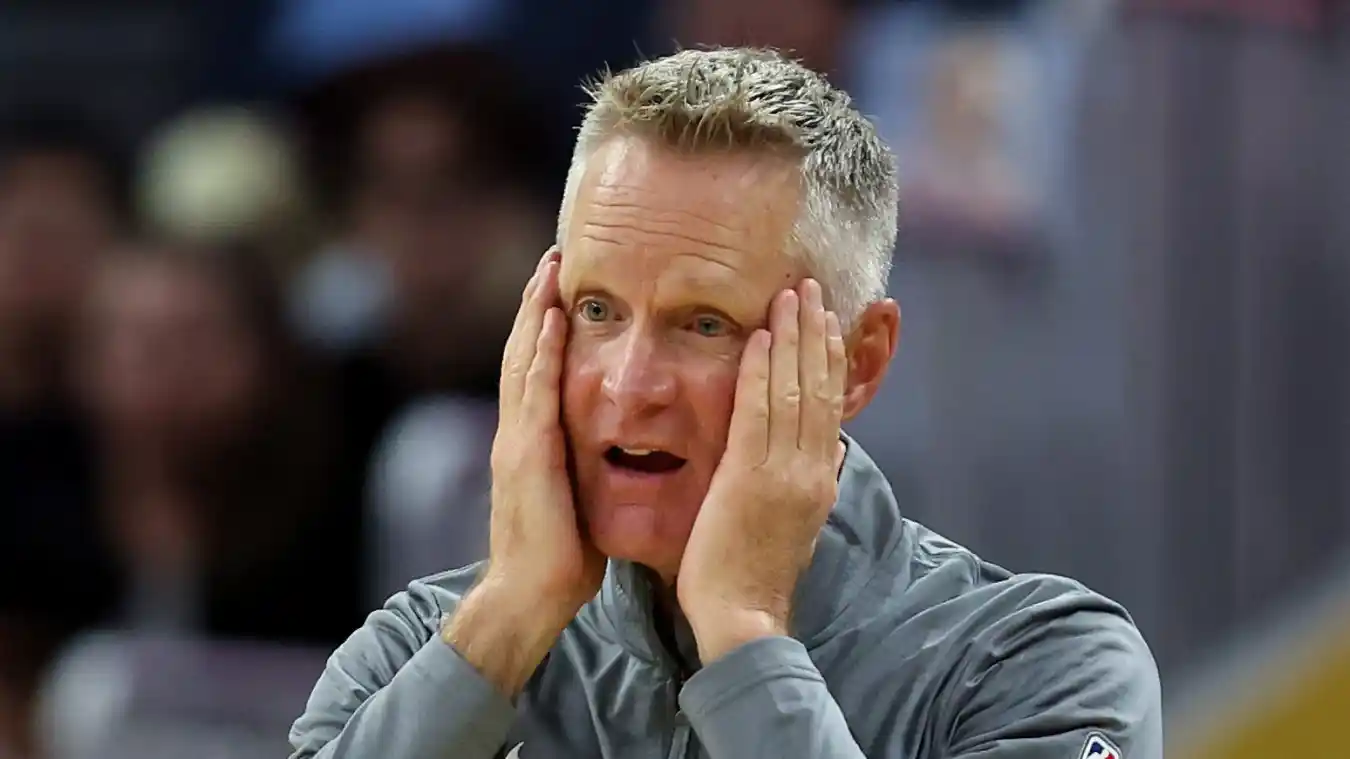The Golden State Warriors, a franchise synonymous with championship glory, face a pivotal offseason as they approach the 2025-26 NBA season. With a roster anchored by superstars Stephen Curry, Jimmy Butler, and Draymond Green, the Warriors are at a crossroads. General Manager Mike Dunleavy’s recent comments, reported by NBC Sports Bay Area, reveal a sobering reality: the team’s financial constraints under the NBA’s second apron make blockbuster trades for marquee stars like Giannis Antetokounmpo “almost impossible.” As fans flood platforms like X with speculation, this analysis dives into the Warriors’ roster challenges, their limited trade options, and what lies ahead for the team. Will Golden State remain a contender, or are they destined for a quieter offseason?

Financial Constraints: The Second Apron Dilemma
The Warriors’ financial situation is the biggest roadblock to roster upgrades. With nearly $140 million committed to Curry, Butler, and Green alone, the team is dangerously close to the NBA’s second apron—a luxury tax threshold that imposes harsh penalties, including restricted trade flexibility. Governor Joe Lacob has repeatedly emphasized the team’s desire to stay under this threshold, a stance reiterated by Dunleavy.
As Dunleavy explained, “Only because of our salary structure and the way it works with the amount of money you can use underneath the second apron… that probably restricts it more than anything for us in terms of pursuing the best roster we can.” This financial bind stems from the Warriors’ aggressive moves in prior seasons, including the acquisition of Jimmy Butler, which pushed their payroll to its limits. Adding a high-salary star like Antetokounmpo would not only trigger crippling tax penalties but also require gutting the roster, leaving little depth to compete.
The implications are clear: the Warriors must get creative with minimal cap space. While fans dream of a splashy trade, the reality is a roster likely to resemble last season’s, with only minor tweaks. This financial straitjacket forces the team to prioritize cost-effective moves over transformative ones, a tough pill to swallow for a fanbase accustomed to bold offseason hauls.

Jonathan Kuminga: The Trade Wildcard
One of the few avenues for roster improvement lies with restricted free agent Jonathan Kuminga. The fourth-year forward, who averaged 15.3 points, 4.6 rebounds, and 2.2 assists last season, is a valuable asset but also a financial question mark. A new contract for Kuminga could exceed $30 million annually, further straining the Warriors’ cap.
Dunleavy acknowledged the complexity of Kuminga’s situation: “We have the ability to bring him back. He’s restricted… I think we feel pretty comfortable with who JK is as a player and what he can do for our organization.” However, Kuminga’s inconsistent role last season—evidenced by four DNPs in the playoffs against the Rockets—raises questions about his long-term fit. His late-season surge, with 26, 23, and 30-point performances against the Timberwolves, showcases his potential as a dynamic scorer, but injuries and fluctuating minutes have tempered expectations.
A sign-and-trade involving Kuminga is the Warriors’ most realistic path to a significant upgrade. According to The Stein Line’s Jack Fischer, the Chicago Bulls have shown interest but are hesitant to overpay. With only the Brooklyn Nets possessing enough cap space to make a competitive offer, the Warriors face a buyer’s market. Dunleavy remains optimistic, noting “good dialogue” with Kuminga’s camp, but he also admitted that restricted free agency negotiations “can drag out.” If no deal materializes, the Warriors may be forced to retain Kuminga, eating into their already limited flexibility.
Strategic Outlook: Small Moves, Big Impact?
With blockbuster trades off the table, the Warriors’ front office must focus on marginal improvements. Dunleavy vowed to “look under every rock” to enhance the roster, signaling a willingness to explore low-cost free agents, minimum contracts, or small-scale trades. These moves, while less glamorous, could bolster the team’s depth—a critical need given the injury concerns surrounding Butler and the aging core of Curry and Green.
The Warriors’ playoff exit last season exposed vulnerabilities, particularly in bench scoring and defensive versatility. While Kuminga’s athleticism addresses some of these gaps, his inconsistent playoff presence underscores the need for reliable role players. Targeting veterans on minimum deals or flipping expiring contracts for rotation pieces could keep the Warriors competitive in the Western Conference, even without a star addition.
However, staying under the second apron limits even these modest ambitions. Every dollar counts, and missteps could lock the Warriors into a roster ill-equipped for a deep playoff run. The front office’s ability to balance cost-cutting with competitiveness will define their success this offseason.
The Golden State Warriors enter the 2025-26 offseason with their hands tied. Financial constraints under the NBA’s second apron, coupled with a top-heavy payroll, make blockbuster trades a pipe dream. Jonathan Kuminga’s future remains the X-factor, with a potential sign-and-trade offering the best chance for a meaningful upgrade. Yet, with limited suitors and a tight cap, the Warriors are likely to run it back with a similar roster, banking on the health and brilliance of Curry, Butler, and Green. While Dunleavy’s commitment to exploring all options is encouraging, fans must temper expectations. The Warriors’ dynasty isn’t over, but this offseason will test their ability to adapt in a new era of fiscal restraint. Stay tuned—this summer’s moves, however small, could shape the franchise’s path for years to come.